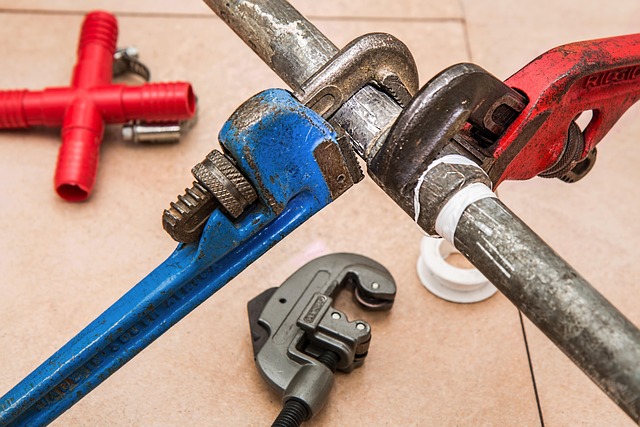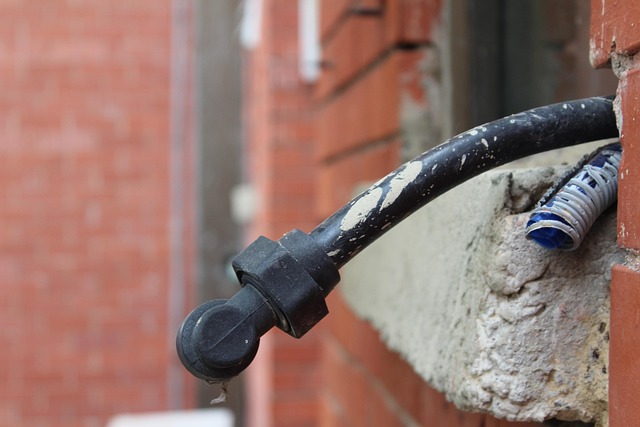Early identification of pipe leaks is crucial for preventing water damage and structural issues. Look for unusual noises, water stains, musty odours, and high humidity. Regularly inspect pipes, especially in winter areas, and act swiftly if a leak is suspected. Effective Pipe Leak Detection Tips include using senses, checking for corrosion/bulges, and employing moisture meters. Prompt action saves costs. Efficient location involves observing water damage signs, turning off the main supply valve, and meticulously inspecting pipes. Proactive measures like regular maintenance checks, insulation, and monitoring unusual noises prevent future leaks. Regular water meter readings and locating shut-off valves ensure quick responses to minor issues.
Do you suspect a pipe leak but don’t know where to start? This comprehensive guide provides essential Pipe Leak Detection Tips, walking you through every step from identifying signs to addressing and preventing future issues. Learn how to locate and assess leaks efficiently, saving time and money on repairs. By following these expert tips, you’ll become adept at maintaining your plumbing system and keeping your home leak-free.
- Identifying Signs of a Pipe Leak
- Steps to Locate and Assess the Leak
- Addressing and Preventing Future Leaks
Identifying Signs of a Pipe Leak

Identifying signs of a pipe leak is crucial for prompt action and potential water damage prevention. Keep an eye out for unusual noises, such as dripping or splashing sounds coming from walls, ceilings, or floors. These could indicate a leak behind the walls or in hidden areas. Additionally, check for unexpected water stains on your ceiling, walls, or floors, which may point to a pipe issue. Other telltale signs include musty odours, as water damage can create breeding grounds for mould, and elevated humidity levels in specific rooms. Regularly inspect your home’s pipes, especially in areas prone to freezing during winter, as burst pipes are common leaks that require immediate attention.
Pipe leak detection tips involve using your senses and being proactive. If you suspect a leak, act swiftly. Turn off the main water supply valve to prevent further water from entering your home. Then, carefully inspect visible pipes for signs of corrosion, cracks, or bulges, especially in older homes. Check for wet spots or discolouration around fittings and appliances connected to pipes. In hard-to-reach areas, use a moisture meter to detect any hidden water intrusion. Early detection and quick action can save you from costly repairs and potential structural damage caused by leaks.
Steps to Locate and Assess the Leak

Locating and assessing a pipe leak is crucial for efficient repair. Start by observing any signs of water damage or unusual noises coming from your pipes. Check for wet spots, mold growth, or persistent dripping sounds, as these could indicate a leak. If you suspect a leak, turn off the main water supply valve immediately to prevent further water loss.
Once you’ve confirmed water loss, visually inspect exposed pipes for visible cracks, corrosion, or bulges. Follow your plumbing system’s layout, checking each fixture and pipe connection carefully. Use a flashlight and a drop of food coloring mixed with water to help track the leak’s source—dripping water will change the color of the water around it, revealing the leak’s location. This Pipe Leak Detection Tip can save you time and money in identifying and fixing the issue promptly.
Addressing and Preventing Future Leaks

Addressing a pipe leak is just the first step; preventing future leaks is equally important. After repairing the immediate issue, take time to inspect your plumbing system for any signs of wear and tear or vulnerabilities. Regular maintenance can go a long way in deterring leaks. Check pipes for corrosion, especially in older homes, as this can weaken their structure. Insulate exposed pipes during colder months to shield them from freezing temperatures, which can cause bursts. Keep an eye out for any unusual noises coming from pipes, as these could indicate weak spots or damage.
Implementing simple Pipe Leak Detection Tips at home can help you catch potential issues early on. This includes periodically checking water meters and comparing readings with household usage patterns. Also, familiarize yourself with the locations of your main shut-off valves; knowing how to turn off the water supply quickly can prevent minor leaks from turning into major disasters. Regularly inspect appliances connected to pipes, such as refrigerators or dishwashers, for any signs of leakage. By adopting these preventive measures, you’ll not only save on repair costs but also protect your home and belongings from potential water damage.
If you suspect a pipe leak, prompt action is crucial. By identifying signs, locating the source, and taking preventive measures, you can minimise damage and save costs. Remember, regular maintenance and quick response to potential leaks are key to avoiding major plumbing disasters. Follow these Pipe Leak Detection Tips for a well-maintained home and peace of mind.
